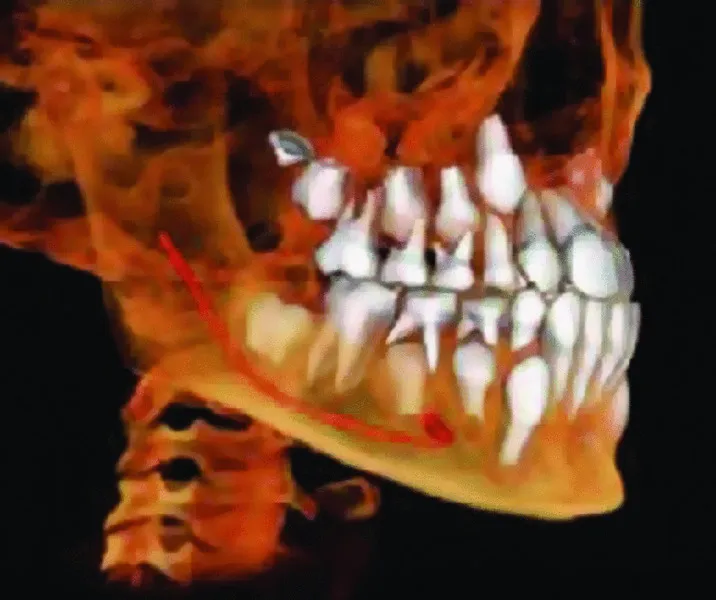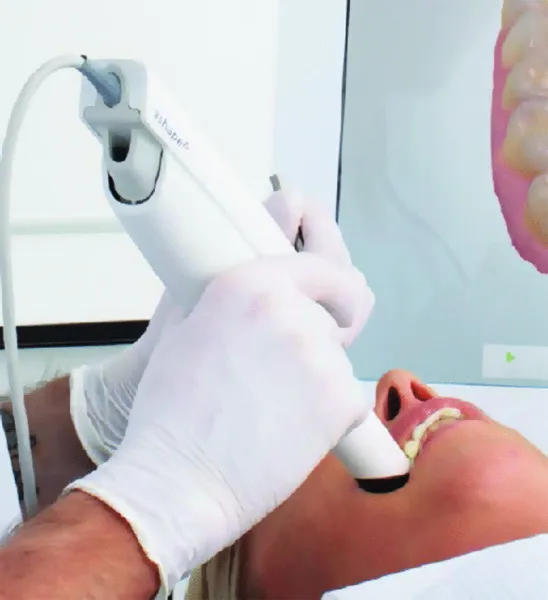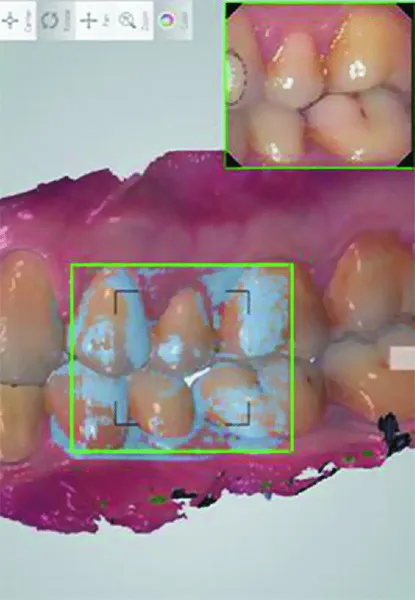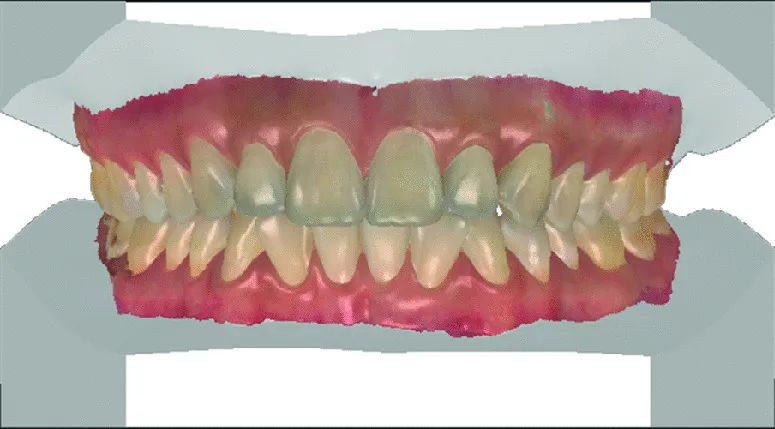
eBook - ePub
Digital Planning and Custom Orthodontic Treatment
K. Hero Breuning, Chung H. Kau, K. Hero Breuning, Chung H. Kau
This is a test
Buch teilen
- English
- ePUB (handyfreundlich)
- Über iOS und Android verfügbar
eBook - ePub
Digital Planning and Custom Orthodontic Treatment
K. Hero Breuning, Chung H. Kau, K. Hero Breuning, Chung H. Kau
Angaben zum Buch
Buchvorschau
Inhaltsverzeichnis
Quellenangaben
Über dieses Buch
Digital Planning and Custom Orthodontic Treatment offers a thorough overview of digital treatment planning as it relates to custom orthodontic treatment.
- Covers 3D imaging of the dentition and the face with intraoral scanners, CBCT machines, and 3D facial scanners
- Provides a complete guide to using digital treatment planning to improve the predictability, efficiency, and efficacy of orthodontic treatment
- Discusses CAD/CAM fabrication of appliances and the monitoring of treatment progress and stability
- Offers detailed descriptions for the main commercial systems on the market
- Presents clinically oriented information to aid in yielding high quality and stable results
Häufig gestellte Fragen
Wie kann ich mein Abo kündigen?
Gehe einfach zum Kontobereich in den Einstellungen und klicke auf „Abo kündigen“ – ganz einfach. Nachdem du gekündigt hast, bleibt deine Mitgliedschaft für den verbleibenden Abozeitraum, den du bereits bezahlt hast, aktiv. Mehr Informationen hier.
(Wie) Kann ich Bücher herunterladen?
Derzeit stehen all unsere auf Mobilgeräte reagierenden ePub-Bücher zum Download über die App zur Verfügung. Die meisten unserer PDFs stehen ebenfalls zum Download bereit; wir arbeiten daran, auch die übrigen PDFs zum Download anzubieten, bei denen dies aktuell noch nicht möglich ist. Weitere Informationen hier.
Welcher Unterschied besteht bei den Preisen zwischen den Aboplänen?
Mit beiden Aboplänen erhältst du vollen Zugang zur Bibliothek und allen Funktionen von Perlego. Die einzigen Unterschiede bestehen im Preis und dem Abozeitraum: Mit dem Jahresabo sparst du auf 12 Monate gerechnet im Vergleich zum Monatsabo rund 30 %.
Was ist Perlego?
Wir sind ein Online-Abodienst für Lehrbücher, bei dem du für weniger als den Preis eines einzelnen Buches pro Monat Zugang zu einer ganzen Online-Bibliothek erhältst. Mit über 1 Million Büchern zu über 1.000 verschiedenen Themen haben wir bestimmt alles, was du brauchst! Weitere Informationen hier.
Unterstützt Perlego Text-zu-Sprache?
Achte auf das Symbol zum Vorlesen in deinem nächsten Buch, um zu sehen, ob du es dir auch anhören kannst. Bei diesem Tool wird dir Text laut vorgelesen, wobei der Text beim Vorlesen auch grafisch hervorgehoben wird. Du kannst das Vorlesen jederzeit anhalten, beschleunigen und verlangsamen. Weitere Informationen hier.
Ist Digital Planning and Custom Orthodontic Treatment als Online-PDF/ePub verfügbar?
Ja, du hast Zugang zu Digital Planning and Custom Orthodontic Treatment von K. Hero Breuning, Chung H. Kau, K. Hero Breuning, Chung H. Kau im PDF- und/oder ePub-Format sowie zu anderen beliebten Büchern aus Medicine & Orthodontics. Aus unserem Katalog stehen dir über 1 Million Bücher zur Verfügung.
Information
1
Documentation of the Dentition
K. Hero Breuning
Introduction
There is a growing demand for innovative ways to record the dentition and craniofacial complex. New technologies rely heavily on sophisticated tools and software to accurately capture the dentition. However, in order that these technologies are routinely used in a mainstream practice, a completely digital, highly accurate, and easily portable system needs to be established to create a worldwide information portal. A complete digital workflow will ensure that the appliances delivered are accurate and will be delivered efficiently to the consumer all over the world. Another more important benefit is that if appliances could be digitally built it would promise to reduce cost as the process would require less manual processing, and the transportation time and costs would not delay the fabrication process. It is this drive to create custom lab work that is fueling the next big game changer in orthodontics. The accurate representation of the dentition is by far the most important step to successful orthodontics. Traditional plaster casts are now slowly being replaced by digital models in orthodontics [1]. These digital models are often obtained via an indirect method that requires the transport of plaster casts or impressions of the dentition to a specialized company for laser or computer tomography (CT) scanning [2–5]. It is a known fact that the process of making plaster casts from dental impression materials such as alginate and polyvinyl siloxane (PVS) impression material has always some degree of dimensional change. During transportation and the period between the impression procedure and the pouring of plaster in the impression, the dimensions of the impression and thus the accuracy of the plaster model can change. Impressions have to be sterilized, transported to a dental lab, and, after fabrication of the plaster models, transported again to the orthodontic office. Plaster dental models have then to be stored in the dental office and retrieved during orthodontic treatment and are prone to fracture. Plaster models and also dental impressions can be scanned with desktop scanners with laser beams and with dedicated CT scanners to transform these models and impressions into digital dental models (Figure 1.1).

Figure 1.1 A dental model scanner.
Company: 3Shape.
Company: 3Shape.
In the literature it is reported that the accuracy of digital dental models scanned directly from impressions when compared to the “golden standard, the plaster cast” is sufficient for orthodontic analysis and treatment planning. But for this method to get a digital dental model an impression or a plaster model is required. As the impression taking procedure and the fabrication of plaster casts is an indirect method to get digital dental models, there is interest in the use of a direct method to copy the dentition.
A direct method to capture the dentition is by using the cone beam computer tomography (CBCT) radiographs [6]. These radiographs can be used for dental analysis, but CBCT involves exposing the patient to radiation, and the quality of the dentition on the CBCT radiograph is directly related to the radiation dose used (Figure 1.2). Because of the ALARA principle (a radiation dose As Low As Reasonably Achievable), CBCT is not indicated for imaging of the dentition only.

Figure 1.2 The segmented dentition on a CBCT radiograph.
Company: Anatomage Inc.
Company: Anatomage Inc.
To answer the need for a digital yet economical solution to physical impression materials, several companies have developed intraoral scanning systems to acquire digital intraoral impressions for any type of dental manufacturing. (For more information on the information presented in this chapter, please visit the websites of the companies mentioned.) Only intraoral scanning systems that can scan the entire dental arch can be used to replace orthodontic impression taking. The files of the scanners (stereolithographic (STL) files) can be used to produce digital dental models (Figure 1.3). These digital models can then be used with dedicated software for the diagnosis of a malocclusion, analyzing the dentition, digital treatment planning, and the design of dental, orthodontic, and surgical appliances. During the last decade, several intraoral scanners have been introduced. The first scanners introduced for intraoral scanning had some disadvantages, such as the need for powdering the dentition, a slow scanning speed, and a relative large and heavy scanning head [7]. Intraoral scanners have recently come to the technology forefront in dentistry as the new holy grail, with the promise to eliminate the dreaded physical impression. If successfully adopted this is sure to be the next trend. Of course, at the end of the day, it will legitimately only be adopted if dentistry can be made easier, faster, and more precise.

Figure 1.3 An intraoral scanner.
Company: 3Shape.
Company: 3Shape.
It is easy with the intraoral scanners to scan the interarch relationship. Registration of the occlusion with an intraoral scanner does not require a separate material for bite registration. The occlusion can be quickly, directly, and accurately captured with the intraoral scanner (Figure 1.4). If intraoral scanners are used, the digital dental models are immediately available for diagnosis and analyzing a malocclusion.

Figure 1.4 Scan of the occlusion.
Company: 3Shape.
Company: 3Shape.
Digital workflow using intraoral scanners
The images of the scanner (some scanners can be used to make a scan, color photographs, and an HD video taken at the same time) have the advantage that they can replace traditional plaster models (Figure 1.5) as well as photography of the dentition (Figure 1.6). Because intraoral scanning is a direct procedure, the intraoral scanning procedure could eventually become more accurate than traditional impression taking as intraoral scanning is not prone to some of the errors that can occur in the traditional impression taking procedure such as air bubbles, rupture of impression material, inaccurate impression tray dimensions, too much or too little impression material, inappropriate adhesion of the impression to the impression tray, and impression material distortion due to the disinfection and transportation procedure.

Figure 1.5 A digital dental model scanned with a color scanner.
Company: 3Shape.
Company: 3Shape.

Figure 1.6 A intraoral scan in color.
Company: 3Shape.
Company: 3Shape.
Inaccurate scanning can be improved by rescanning a specific part of the impression, so the procedure to entirely retake an impression can be postponed. Intraoral scanning could be particularly advantageous for patients with anxiety during impression taking (especially for the upper impression) and for cleft palate patients who could carry an increased risk of impression material aspiration and for whom standard impression trays are not suitable. Intraoral scanning could also be an advantage for patients currently undergoing orthodontic treatment with fixed appliances, for whom a traditional impression will be severely distorted because of the presence of the orthodontic appliances. Currently, the mean time needed for intraoral scanning is shorter than that required for taking traditional PVS impressions (one impression with heavy material and a second impression with soft impression material) but longer than required for the alginate impression taking procedure. Most patients have reported that the intraoral scanning procedure is more comfortable than conventional impression taking, especially with PVS impressions, although some studies have reported the opposite conclusion [8–11]. It can be speculated that the reduction in scanning time as well as the possibility to scan without powdering the dentition will improve the positive experience of the patient with the scanning procedure. It is expected that improvem...